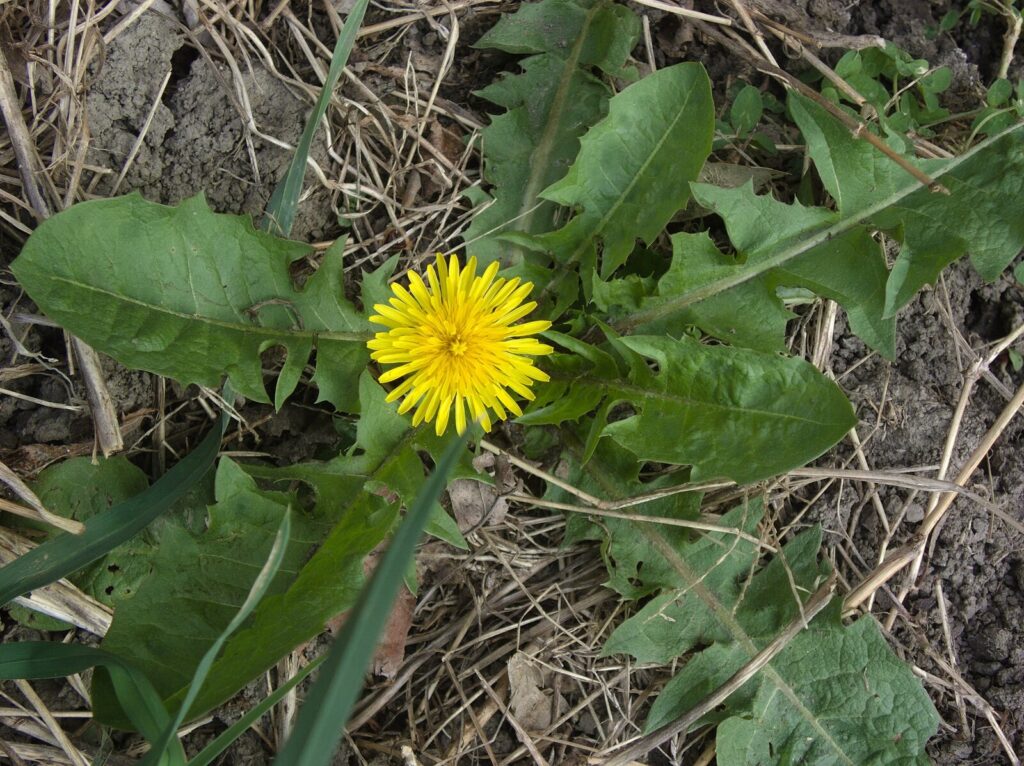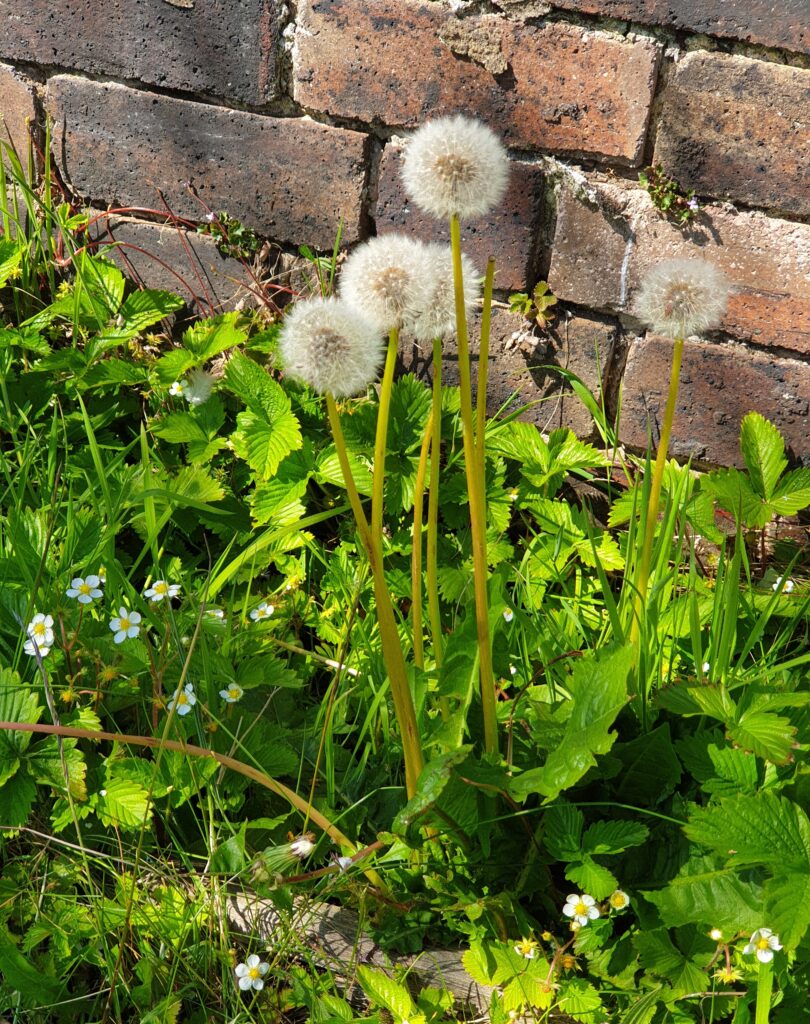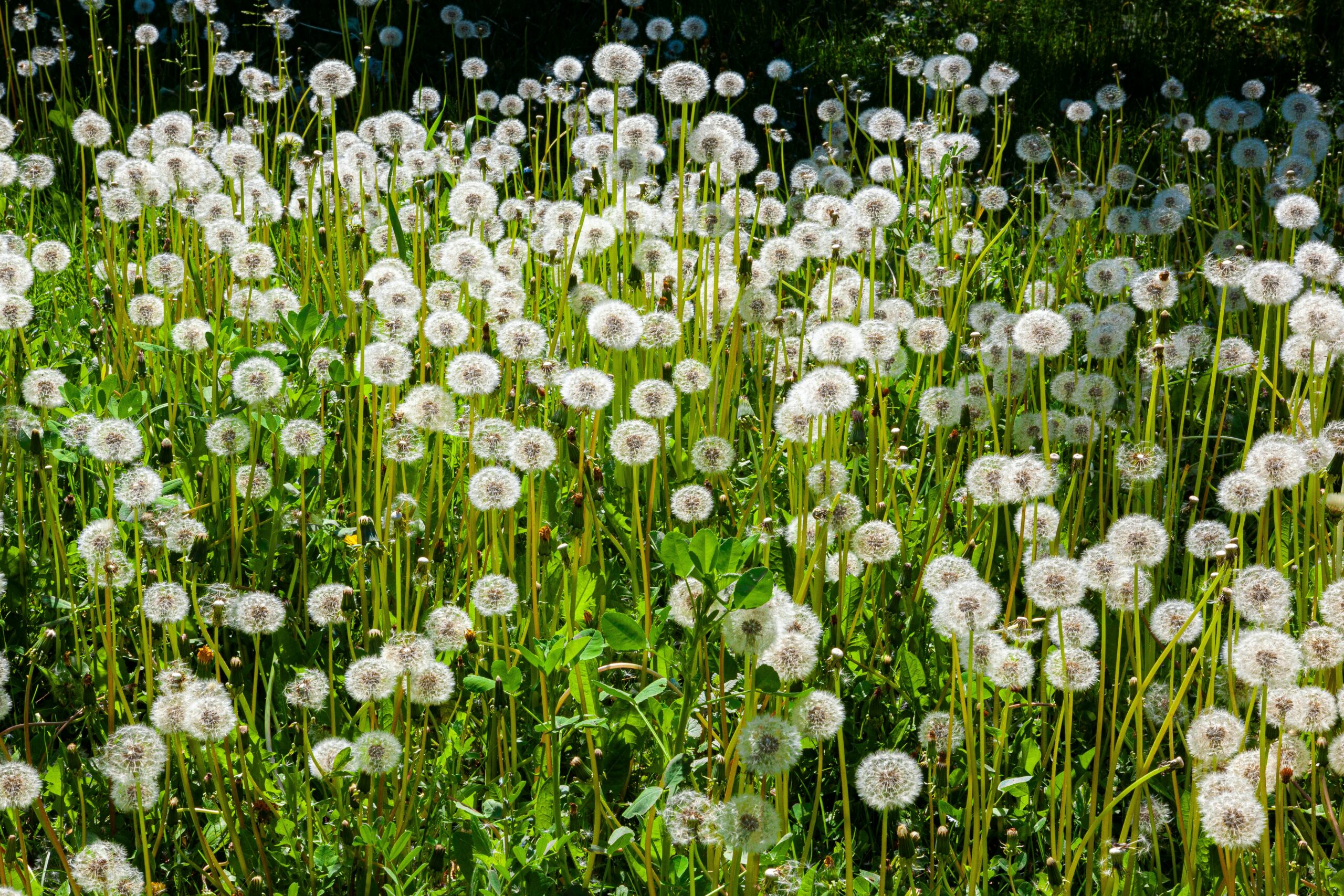Guest Blog By Sarah Gerhardt
Dandelion (Taraxacum spp.) is often disregarded as a weed and a nuisance. However, dandelions are cornerstones of ecology and of great benefit to our own well-being and the health of the planet.
It’s bad reputation stems from the fact dandelion is an incredibly resourceful and resilient plant. It will put its tap root down virtually anywhere and the seedheads with their little parachutes will travel far and wide in the wind.
Let’s take a look at a few reasons why we should look at dandelions more favourably and how we can allow some in our garden without them taking over.

Soil and Ecosystem Benefits
The long, powerful tap roots of dandelion help break up compacted soil which helps improve water penetration and drainage. This creates pathways for beneficial soil creatures such as earthworms and makes it easier for other plants to establish. The dandelion roots also enrich the top soil with nutrients such as calcium and potassium that they draw up from deeper soil layers. This benefits all plants.
Dandelion flowers are rich in pollen and nectar. They have a long flowering period and start blooming when few other plants are in flower. This makes them very valuable for bees who rely on plants like dandelion as an early nectar and pollen source. This is especially the case for queen bumblebees who need a lot of nutrition when they emerge from hibernation
Dandelions also provide nectar for butterflies, hoverflies and many other insects that are of great importance to our ecosystem. Dandelion leaves are an essential food source for the larvae of some moths and butterflies such as the painted lady caterpillar.
Dandelion leaves are high in nutrients and eaten by many herbivores such as deer and rabbits. The leaves provide both food and shelter for insects such as ladybugs, lacewings and many beetles. These insects prey on garden pests which means that they can act as a form of natural pest control in the garden.
The fluffy seedheads of dandelions make great nesting material for birds and many birds such as sparrows and goldfinches feed on the seeds.
Health Benefits For Humans
Dandelions have been used in traditional medicine for centuries and offer several health benefits to humans.
The greens of the plant are highly nutritious containing vitamins A, C, K, E and many B vitamins. They also contain good amounts of iron, calcium, magnesium and potassium. Dandelion root is rich in fibre, in particular the prebiotic fibre inulin.
Dandelion root has traditionally been used to aid digestion. It helps the body to break down fats better by stimulating appetite and bile production. The inulin in the root supports gut microbiota.
Dandelion contains polyphenols which are known to fight inflammation and oxidative stress. This may help protect against chronic diseases and certain cancers.
Consuming dandelion helps to increase urine production, which may assist with reducing water retention and could provide a mild detoxification. By eliminating excess fluid it can potentially also help manage blood pressure.
You can drink dandelion as a tea from the roots or leaves, or consume it as tinctures or capsules. The leaves can be eaten as fresh greens in salads and the root can be roasted as a coffee substitute.
Be careful when consuming dandelion, especially if you have not had it before. It can cause allergic reactions in some people, especially those allergic to ragweed, daisies or chrysanthemums. It may also interact with diuretics, blood thinners, or lithium and may not be tolerated by those with gallbladder issues. Speak to your doctor before consuming dandelion if you have pre-existing health conditions or take medication that may interact with it.

How To Grow Dandelions Without Losing Control
If you’re cultivating a wildlife-friendly garden, letting dandelions bloom – even in small patches – can make a significant difference. Here are some tips for how to integrate dandelions into your garden without them taking over.
Let a few dandelions flower early in the season to feed pollinators but do not let them go to seed. Once they start forming seed heads, cut them back to prevent them from spreading. This way you are allowing the flowers to feed bees and other insects and by deadheading the spent flowers the dandelions will put energy into more flowers instead of seedheads. So they will keep feeding the bees but will not go to seed and spread.
Another great way to restrain the dandelions in your garden is to designate a contained area such as a wild corner or a planter as a dandelion patch. This is the only area in your garden where you will allow dandelions to grow. Create a pollinator hotspot by mixing them with other bee-friendly wildflowers such as clover, yarrow or echinacea.
If you have a lawn it is likely to have some dandelions growing in it. In early spring mow around them and let them flower so that pollinators can benefit from the blooms. Once the plants have finished flowering, mow them down immediately before they go to seed.
Making your own salads and teas from dandelion will keep the population in check and can benefit your health. And if you find dandelions creeping into areas where they are not welcome, a natural barrier is the way to go. For example, you could use mulch or ground covering plants to make it harder for dandelion seedlings to take root and mature.
As we have seen, dandelions are much more than just a weed. They are highly beneficial to the ecosystem, have great health benefits and are an essential food source. It is worth changing the negative attitude many of us gardeners hold towards this amazing plant.
We can enjoy the ecological benefits of dandelions without losing our lawn or garden to them. A bit of strategic management lets us keep these sunny little powerhouses without becoming overwhelmed by them.
Whether we allow dandelions in our garden or not we should never use broadleaf herbicides to kill dandelions. Using herbicides has wider negative ecological implications and we risk harming pollinators and nearby beneficial plants in the process. We should always endeavour to use manual control and smart planning instead.
About the author: Sarah Gerhardt is a gardener, linguist and punk musician based in Edinburgh. She was head gardener at the Dean Gardens, Edinburgh for 9 years and runs her own gardening business Gerhardt’s Garden Service. Find out more via her Linktree: https://linktr.ee/gerhardtsgardenservice
-
 Builder’s Bag Planter Mix£79.00 inc VATRated 4.93 out of 5 based on 41 customer ratings
Builder’s Bag Planter Mix£79.00 inc VATRated 4.93 out of 5 based on 41 customer ratings -
 Builder’s Bag Kelpie Compost£72.00 inc VATRated 4.96 out of 5 based on 137 customer ratings
Builder’s Bag Kelpie Compost£72.00 inc VATRated 4.96 out of 5 based on 137 customer ratings -
 Builder’s Bag Green Goodness£52.00 inc VATRated 4.90 out of 5 based on 197 customer ratings
Builder’s Bag Green Goodness£52.00 inc VATRated 4.90 out of 5 based on 197 customer ratings



